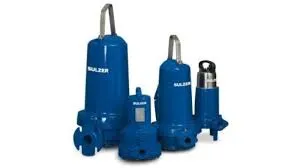English
- Afrikaans
- Albanian
- Amharic
- Arabic
- Armenian
- Azerbaijani
- Basque
- Belarusian
- Bengali
- Bosnian
- Bulgarian
- Catalan
- Cebuano
- Corsican
- Croatian
- Czech
- Danish
- Dutch
- English
- Esperanto
- Estonian
- Finnish
- French
- Frisian
- Galician
- Georgian
- German
- Greek
- Gujarati
- Haitian Creole
- hausa
- hawaiian
- Hebrew
- Hindi
- Miao
- Hungarian
- Icelandic
- igbo
- Indonesian
- irish
- Italian
- Japanese
- Javanese
- Kannada
- kazakh
- Khmer
- Rwandese
- Korean
- Kurdish
- Kyrgyz
- Lao
- Latin
- Latvian
- Lithuanian
- Luxembourgish
- Macedonian
- Malgashi
- Malay
- Malayalam
- Maltese
- Maori
- Marathi
- Mongolian
- Myanmar
- Nepali
- Norwegian
- Norwegian
- Occitan
- Pashto
- Persian
- Polish
- Portuguese
- Punjabi
- Romanian
- Russian
- Samoan
- Scottish Gaelic
- Serbian
- Sesotho
- Shona
- Sindhi
- Sinhala
- Slovak
- Slovenian
- Somali
- Spanish
- Sundanese
- Swahili
- Swedish
- Tagalog
- Tajik
- Tamil
- Tatar
- Telugu
- Thai
- Turkish
- Turkmen
- Ukrainian
- Urdu
- Uighur
- Uzbek
- Vietnamese
- Welsh
- Bantu
- Yiddish
- Yoruba
- Zulu
Telephone: +86 13120555503
Email: frank@cypump.com
Aug . 07, 2024 13:25 Back to list
Design and Application of Horizontal Centrifugal Pumps for Efficient Slurry Transportation in Industry
Horizontal Centrifugal Slurry Pumps An Overview
Horizontal centrifugal slurry pumps are essential machinery in various industries, particularly in mining, mineral processing, chemical processing, and wastewater treatment. These pumps are designed to transport abrasive and viscous slurries, which are mixtures of liquid and solid particles. In this article, we will explore the construction, operation, applications, and advantages of horizontal centrifugal slurry pumps.
Construction and Operation
A horizontal centrifugal slurry pump consists of several key components the pump casing, impeller, shaft, bearings, and suction/discharge ports. The pump casing is typically made from robust materials such as cast iron, stainless steel, or various alloys to withstand the abrasive nature of slurries. The impeller, which is actively responsible for moving the slurry, is designed with specific geometries to optimize flow rates and pressure.
The operation of a horizontal centrifugal slurry pump is straightforward. When the pump is activated, the motor drives the impeller, creating a centrifugal force that pushes the slurry outwards. This action generates a difference in pressure, effectively drawing the slurry into the pump through the suction port. The intricate design of the impeller and casing ensures maximum efficiency and minimizes wear and tear from abrasive materials.
Key Applications
Horizontal centrifugal slurry pumps are widely used across different sectors. In mining, they transport slurries composed of extracted minerals and water, aiding in ore processing and tailings disposal. The chemical industry utilizes these pumps for moving slurries containing corrosive substances, where selecting the appropriate materials for construction is vital for longevity.
horizontal centrifugal slurry pump

In wastewater treatment facilities, horizontal centrifugal slurry pumps are integral in managing sludges, helping in the treatment process. The versatility of these pumps also extends to construction projects for transporting cement slurries or other building materials.
Advantages
One of the primary advantages of horizontal centrifugal slurry pumps is their ability to handle a wide range of slurry concentrations and types. Their design allows for smooth and efficient transportation of both fine and coarse materials, making them ideal for challenging applications. Additionally, these pumps can be designed to accommodate various flow rates and pressures, providing flexibility for different operational requirements.
Another significant benefit is the ease of maintenance. The horizontal configuration allows for easier access to the internal components, facilitating inspections and repairs without extensive disassembly. This feature is particularly crucial in industries where downtime can lead to significant financial losses.
Furthermore, horizontal centrifugal slurry pumps are known for their energy efficiency. With advancements in pump technology, modern designs incorporate features such as variable frequency drives (VFDs), which optimize flow and reduce energy consumption. This eco-friendly aspect aligns with global efforts to reduce operational costs and minimize environmental impact.
Conclusion
In conclusion, horizontal centrifugal slurry pumps play a vital role in various industrial processes, characterized by their robust construction, efficient operation, and wide application range. Their ability to handle abrasive slurries and ease of maintenance make them an invaluable asset in sectors such as mining, chemicals, and wastewater management. As industries continue to evolve, so too will the technology behind these pumps, enhancing their performance and sustainability to meet the growing demands of the market.
-
ISG Series Vertical Pipeline Pump - Chi Yuan Pumps Co., LTD.|High Efficiency, Energy Conservation, Low Noise
NewsJul.29,2025
-
ISG Series Vertical Pipeline Pump-Chi Yuan Pumps Co., LTD.|High Efficiency&Energy-Saving
NewsJul.29,2025
-
ISG Series Vertical Pipeline Pump - Chi Yuan Pumps Co., LTD. | High Efficiency, Energy-Saving
NewsJul.29,2025
-
ISG Series Pipeline Pump - Chi Yuan Pumps | High Efficiency, Low Noise
NewsJul.29,2025
-
High-Efficiency Vertical Slurry Pumps for Mining & Industry Solutions
NewsJul.29,2025
-
High-Efficiency Pipeline Pump Solutions for Every Pipeline Pump Station
NewsJul.29,2025










